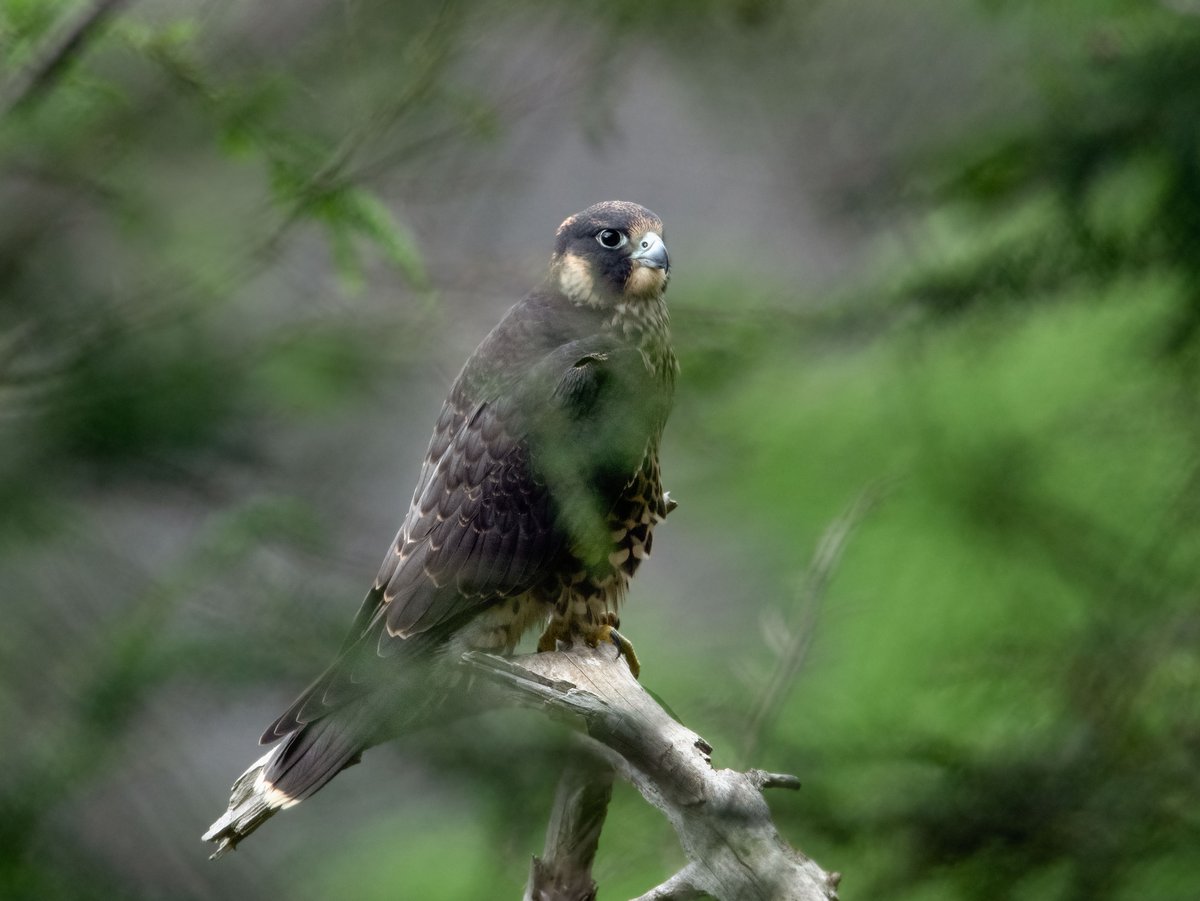“For ten years I spent all my winters searching for that restless brilliance, for the sudden passion and violence that peregrines flush from the sky. For ten years I have been looking upward for that cloud-biting anchor shape, that crossbow flinging through the air.” J. A. Baker’s The Peregrine, published in 1967, was a requiem for a dying world.
Falcons had been methodically slaughtered in England several decades earlier in order to protect homing pigeons carrying wartime messages. Now the surviving populations were being decimated by organochlorine pesticides. “Few peregrines are left, there will be fewer, they may not survive. Many die on their backs, clutching inanely at the sky in their last convulsions, withered and burnt away by the filthy, insidious pollen of farm chemicals.” DDT, one of those chemicals, thinned eggshells so that they crumpled like paper. In the U. S., the same thing was happening. There were almost no peregrines east of the Mississippi and only a few more in the west. The species was placed on the Endangered Species list in 1970.

Photo: Melissa Groo
It was an ignominious ending to a millennia-long partnership. Before the invention of accurate firearms, tamed raptors were used to hunt birds, and peregrines have clutched the gloved fists of many generations of falconers. Releasing a bird to hunt is like launching an autonomous military drone. Once it sees a pigeon down below, it draws its long wings, small head, and streamlined body into a dart: one wonders if early arrowhead-makers were imitating the shape of hunting falcons. As it freefalls toward the earth at over 200 mph, baffles in its nostrils allow it to breathe, a shuttering third lid keeps its eyes moist and clear, and its black mask reduces glare from the sun. The unlucky pigeon is sliced by its talons at one-third the speed of sound: instant death.
The efficient savagery of the peregrine is in curious tension with its poetic name, which has been used since at least the fourteenth century. Peregrine comes from a Latin word meaning “foreigner,” “pilgrim,” or “wanderer.” There are many theories of its origin, none satisfactory. Some say that it comes from the fact that falcons nest on high cliffs, so chicks had to be taken during their first flights, or “pilgrimages.” Others say that it is because they choose nesting sites far from where they hatch, or because they migrate long distances (though this is only true of some populations). Ironically, Falco peregrinus is no foreigner: it is found on every continent except Antarctica, and in all but the harshest environments. Perhaps its characteristic black hood reminded people of the headgear of medieval travelers. Or perhaps – and now I am merely speculating – its striking yellow-ringed eyes and black mask made it seem alien, possibly even a messenger to the gods. There is, after all, archeological evidence that peregrines played a role in the spiritual lives of peoples as far apart as the Mississippi Valley and North Africa. The Egyptian god Horus had the head of a peregrine.
Once revered for its fierceness and connection to spiritual realms, the peregrine had transformed into a bad omen by the 1960s. Apex predators were most vulnerable because DDT accumulated in their tissues, but soon all of the birds would fall silent. Citizens, scientists, lawyers, and politicians sprang into action in response to the imminent disaster in a way that seems almost miraculous today. Cornell ornithologists collected birds in Alaska, bred them in captivity, and released them into the wild. DDT was banned in 1972, though it took years for it to degrade in the environment. The peregrine population climbed steadily, and the species was taken off of the federal Endangered Species list in 1999.
Although they are still considered endangered in New York State, these pilgrim birds now breed in the Adirondacks and the Hudson Valley. They have even journeyed outside of their historic range in order to live in cities, which are full of urban cliffs like skyscrapers and bridges. After 74 years of absence, a nesting pair took up residence at Taughannock Falls in 2020. J. A. Baker mused, “The eye becomes insatiable for hawks”: delighted and grateful locals would agree.

